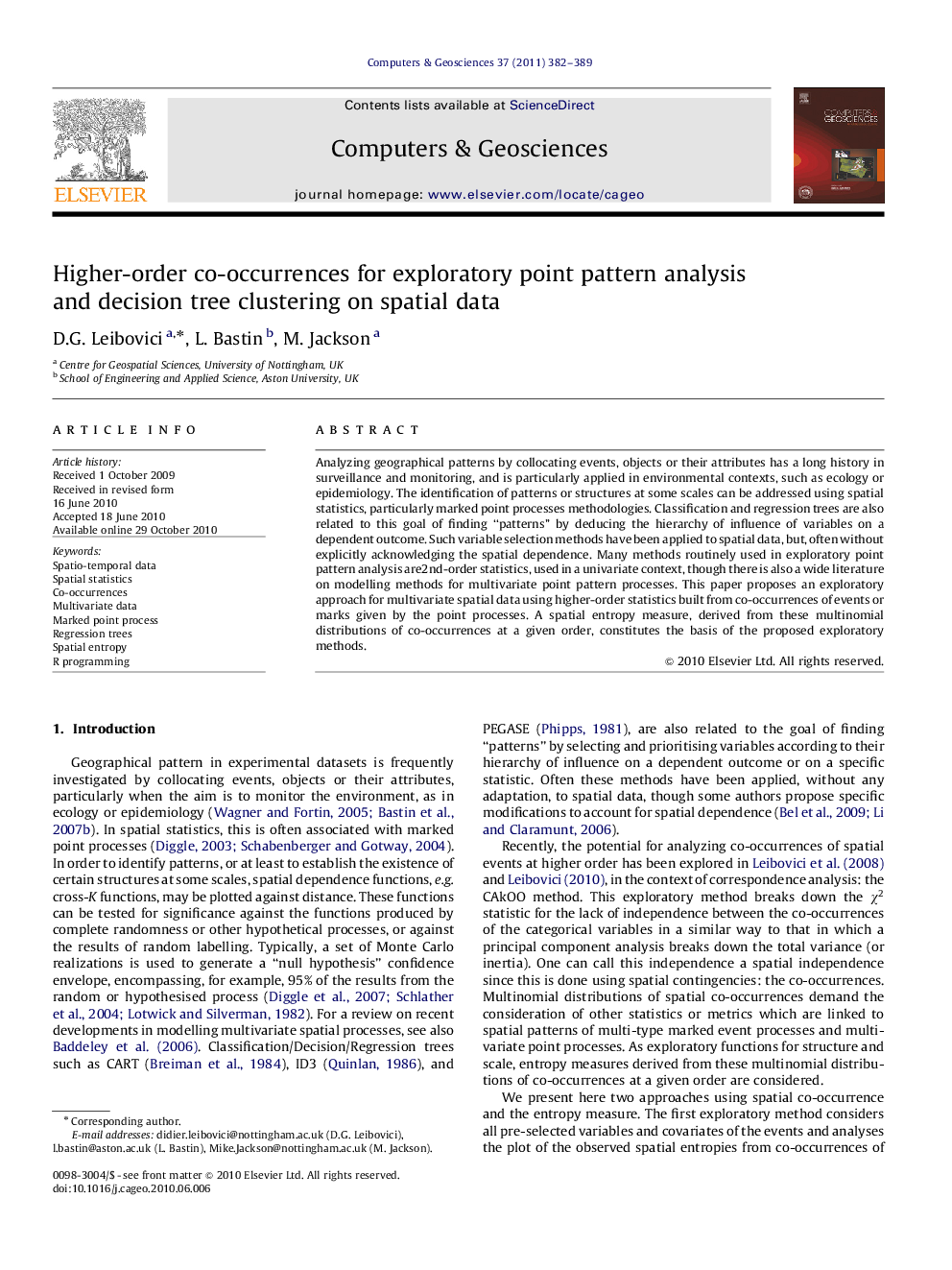| Article ID | Journal | Published Year | Pages | File Type |
|---|---|---|---|---|
| 507256 | Computers & Geosciences | 2011 | 8 Pages |
Analyzing geographical patterns by collocating events, objects or their attributes has a long history in surveillance and monitoring, and is particularly applied in environmental contexts, such as ecology or epidemiology. The identification of patterns or structures at some scales can be addressed using spatial statistics, particularly marked point processes methodologies. Classification and regression trees are also related to this goal of finding “patterns” by deducing the hierarchy of influence of variables on a dependent outcome. Such variable selection methods have been applied to spatial data, but, often without explicitly acknowledging the spatial dependence. Many methods routinely used in exploratory point pattern analysis are2nd-order statistics, used in a univariate context, though there is also a wide literature on modelling methods for multivariate point pattern processes. This paper proposes an exploratory approach for multivariate spatial data using higher-order statistics built from co-occurrences of events or marks given by the point processes. A spatial entropy measure, derived from these multinomial distributions of co-occurrences at a given order, constitutes the basis of the proposed exploratory methods.
